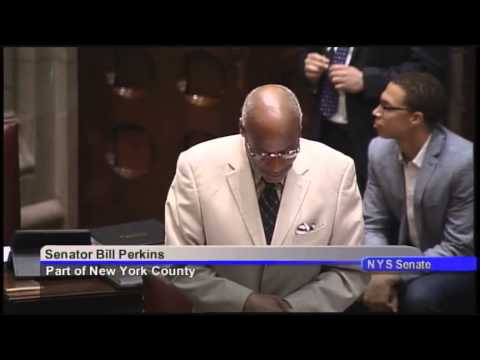It’s Time to Reform Eminent Domain
Bill Perkins
December 17, 2009
-
COMMITTEE:
- Corporations, Authorities and Commissions
It’s Time to Reform Eminent Domain
The recent court ruling against the attempted takeover of private property for Columbia University’s expansion in Harlem recognizes what many of us already knew: New York’s eminent domain laws are broken and need reform.
The process lacks transparency, accountability, or meaningful public participation and fails to protect the rights of citizens and property owners. Instead of balancing property rights, civil rights, and the public’s genuine development interests, New York’s laws favor government bureaucrats and private developers.
Public hearings by the Senate’s Corporations, Authorities, and Commissions Committee, which I chair, uncovered allegations of eminent domain abuse, confirmed in the Appellate Division ruling against the Empire State Development Corporation (ESDC).
ESDC used the same consultants hired by Columbia to conclude that the West Harlem neighborhood suffers from ‘blight.’ Since the expansion of a private elite institution does not qualify as a civic purpose, a finding of ‘blight’ was the only way ESDC could justify seizing property.
But the current definition of ‘blight’ is vague, at best. The state could identify any neighborhood as blighted due to absurd criteria such as the cracked sidewalks and loose awnings cited in the Columbia decision. Any building under two stories, regardless of its condition, was deemed “underutilized”- and therefore blighted.
Even more problematic is the strong evidence of collusion between the state and Columbia, a private developer attempting to use government power to take private property. Add to this the ESDC’s ability to hide behind weak disclosure laws in order to avoid Freedom of Information Law requests by affected property owners, and you have a pattern of unaccountable, secretive and discriminatory behavior that is unacceptable in a free society.
Eminent domain is an awesome government power that may easily be abused by the powerful to dispossess the powerless. The Appellate court ruling noted the view that “‘few policies have done more to destroy community and opportunity for minorities than eminent domain.’”
Columbia’s continuing expansion raises the nightmares of 1968. It was the construction of a university gym in Morningside Park, opposed by the community, that sparked the student takeover of campus buildings and years of unrest.
In fact, the current eminent domain laws are a holdover from the 1950s and ‘60s when so-called urban renewal schemes displaced millions of people and destroyed hundreds of neighborhoods, disproportionately harming low-income and minority families. Many agreed with novelist James Baldwin when he famously quipped that “urban renewal” was merely code for “negro removal.”
I have respectfully requested Governor Paterson to urge ESDC to not appeal the Columbia decision. I also asked the Governor to impose a state-wide moratorium on condemnation actions until the Legislature can address the flaws in the existing law. I am currently at work on legislation that will bring increased accountability, transparency, and public input into the condemnation process.
Since the Supreme Court’s Kelo v. New London decision in 2005, 43 states have changed their eminent domain laws to better protect home and business owners. It is now time for New York to do the same.
Share this Article or Press Release
Newsroom
Go to Newsroom
Barbara J. Exum
May 20, 2015

